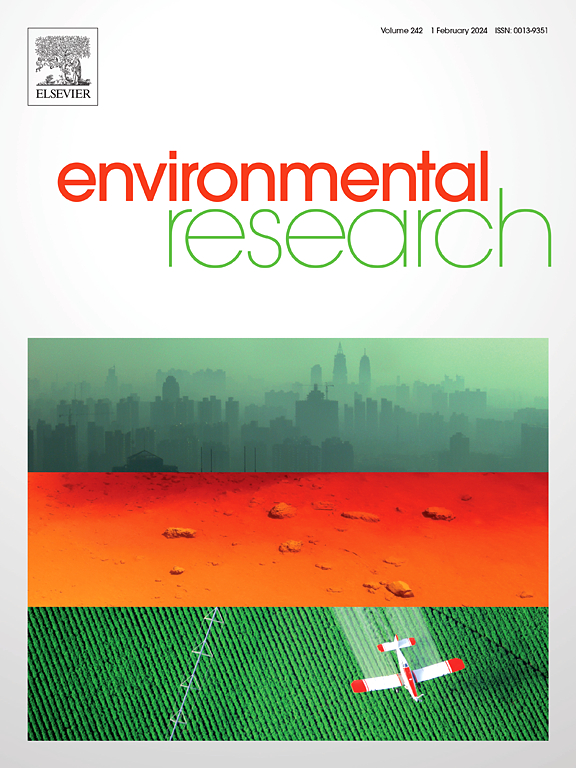High temperature and humification reduce DNA viruses in food waste composting
IF 7.7
2区 环境科学与生态学
Q1 ENVIRONMENTAL SCIENCES
引用次数: 0
Abstract
The fate of DNA viruses (phage and non-phage viruses) was investigated in a full-scale food waste (FW) facility. Composting reduced DNA virus abundance in FW by 74.8–88.9 % and diversity by 67.8–69.7 %, regardless of phage and non-phage viruses. Firmicutes and Proteobacteria were identified as the primary hosts, with most phages encoding functional genes linked to carbon and nitrogen metabolism. Despite the beneficial role of DNA viruses, their abundance in untreated food waste was 4.7 times higher than in soil. High temperature and humification (indicated by humus content and germination index (GI)) could inhibit both phage and non-phage viruses in FW, leading to a reduction in their abundance, similar to what is observed in soil. In conclusion, DNA viruses, particularly phages, contribute to the composting process by participating in carbon and nitrogen metabolism. Enhancing the thermophilic period and humification degree may help mitigate the risks associated with these viruses in composting products.
高温和腐殖化作用可减少食物垃圾堆肥中的DNA病毒
在一个完整的食物垃圾(FW)设施中研究了DNA病毒(噬菌体和非噬菌体病毒)的命运。无论是噬菌体病毒还是非噬菌体病毒,堆肥使FW的DNA病毒丰度降低了74.8 - 88.9%,多样性降低了67.8 - 69.7%。厚壁菌门和变形菌门被确定为主要宿主,大多数噬菌体编码与碳和氮代谢相关的功能基因。尽管DNA病毒发挥了有益的作用,但它们在未经处理的食物垃圾中的丰度是土壤中的4.7倍。高温和腐殖化(由腐殖质含量和发芽指数(GI)表示)可以抑制FW中噬菌体和非噬菌体病毒,导致其丰度减少,与土壤中观察到的情况相似。综上所述,DNA病毒,特别是噬菌体,通过参与碳氮代谢来促进堆肥过程。延长嗜热期和腐殖质化程度有助于减轻堆肥产品中与这些病毒相关的风险。
本文章由计算机程序翻译,如有差异,请以英文原文为准。
求助全文
约1分钟内获得全文
求助全文
来源期刊

Environmental Research
环境科学-公共卫生、环境卫生与职业卫生
CiteScore
12.60
自引率
8.40%
发文量
2480
审稿时长
4.7 months
期刊介绍:
The Environmental Research journal presents a broad range of interdisciplinary research, focused on addressing worldwide environmental concerns and featuring innovative findings. Our publication strives to explore relevant anthropogenic issues across various environmental sectors, showcasing practical applications in real-life settings.
 求助内容:
求助内容: 应助结果提醒方式:
应助结果提醒方式:


